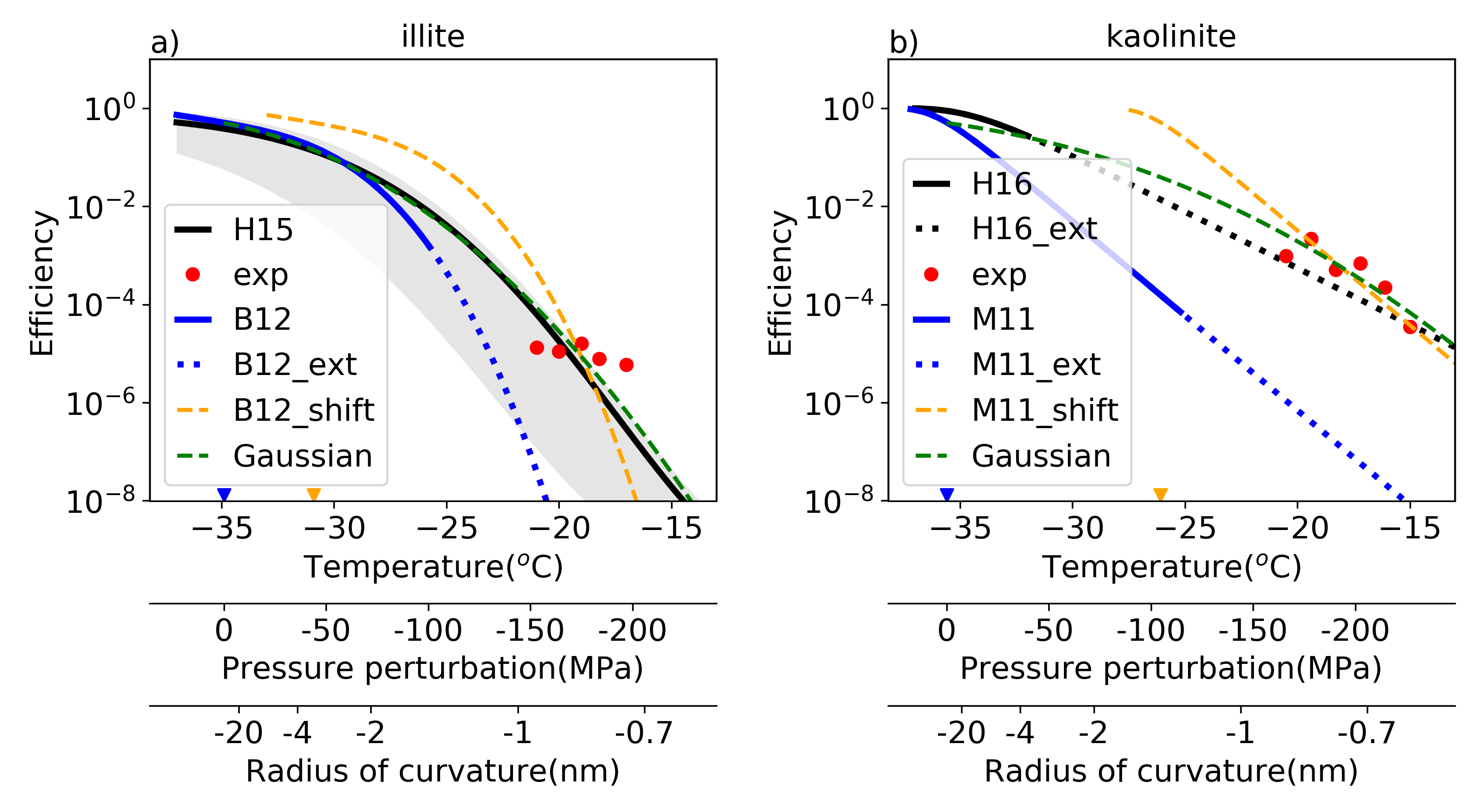Estimation of pressure perturbations needed to explain contact nucleation
Submitter
Yang, Fan — Brookhaven National Laboratory
Vogelmann, Andrew M. — Brookhaven National Laboratory
Area of research
Cloud Processes
Journal Reference
Science
The pressure perturbation hypothesis, which arose from recent lab experiments, has been proposed to explain the long-standing mystery of contact nucleation. However, validating the hypothesis is extremely difficult as it would require measuring pressure perturbations caused by the impact of ice nucleating particles on supercooled droplets. Instead, we improve understanding by estimating the pressure perturbations needed to account for the observed contact nucleation efficiencies for illite and kaolinite. The needed pressure perturbation magnitudes are found to be physically feasible, being achievable through different mechanisms.
Impact
The reason why ice nucleation is more efficient by contact nucleation than by immersion nucleation has been a puzzle for more than half a century. At least five hypotheses have been proposed but none of them can fully explain the observations. The pressure perturbation hypothesis can explain nearly all previous lab results related to contact nucleation and this paper shows that the magnitudes of the needed perturbations are feasibly achievable through different mechanisms. Our method provides a way to estimate pressure perturbation responsible for contact nucleation and provides suggestions for future experiments and simulations.
Summary
We summarize six proposed mechanisms to explain contact nucleation efficiency. Among them, the recently proposed pressure perturbation hypothesis can explain nearly all existing results related to contact nucleation. The pressure perturbation hypothesis also has a physical foundation that may be advantageous for developing physical-based and experimental-constrainable parameterization for contact nucleation. The pressure perturbations needed to explain the observed contact nucleation efficiencies are determined from the enhancement needed beyond immersion nucleation efficiencies. Two mineral dusts, illite and kaolinite, were chosen to estimate the pressure perturbations due to their well-known behavior of immersion nucleation and contact nucleation. The estimated pressure perturbation is very sensitive to the immersion freezing parameterization used, and the parameterized active site density (ns). We cannot provide accurate limits of the estimated pressure perturbations due to the uncertainties of ns and surface area, but it is safe to say that the absolute value of the estimated pressure perturbation, which depends on the immersion freezing parameterization used, can be very small (close to 0 Pa) or as large as the cavitation pressure (i.e., above which gas bubbles form inside the liquid). These estimates lead to, respectively, a negligible or significant enhancement of the freezing temperature. Three possible approaches can reach the needed negative pressure perturbations including bubble formation and breakup, Laplace pressure arising from the distorted contact line, and shear.


